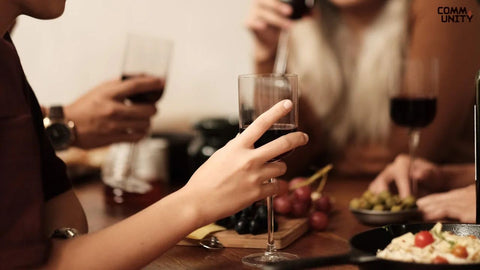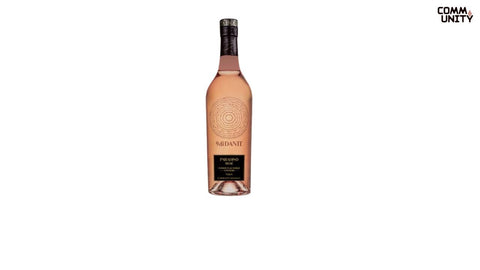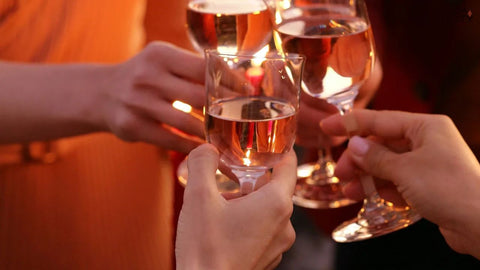Mastering the proper technique of holding a wine glass reflects sophistication, enhances the wine experience, and preserves its intended character.
However, not everyone gets the “holding wine glass” part right. But then again, it’s not rocket science and everyone can do it! So, read on to explore in detail the correct way to hold various types of wine glasses, explain why it matters, and guide you through formal etiquette for social or professional settings.

Why Proper Wine Glass Holding Matters
Correct handling of a wine glass isn’t just about appearance or etiquette. It directly impacts temperature control, aroma perception, and more.
Holding the glass incorrectly warms the wine, alters its bouquet, and leaves smudges on the glass that compromise the visual elegance of the drink.
Anatomy of a Wine Glass: Understanding the Design
A typical wine glass consists of these parts:
-
Base – The flat bottom that keeps the glass stable on a surface.
-
Stem – The slender column that you’re supposed to hold.
-
Bowl – The rounded container that holds the wine.
-
Rim – The top edge from which the wine is sipped.
The design of the stem is to allow you to easily hold the glass without affecting the bowl, and thus, retaining the temperature of the wine in it.
How to Hold a Wine Glass with a Stem
The correct grip while holding a wine glass depends on the type of wine being served. For stemmed glasses, the key is to avoid touching the bowl altogether.
Here’s how to do it properly:
Pinch the Stem at the Base
The proper way to hold a wine glass is to place your thumb and forefinger near the base of the stem. Your remaining fingers can gently rest on the base. This position offers the most stability while maintaining the glass's temperature.
Delicate Grip, Not a Clench
Use a light, balanced touch. A firm clench appears aggressive and risks leaving fingerprints or even tipping the wine. The goal is to let the glass rest securely between your fingers while looking elegant.
Avoid Cupping the Bowl
Even if the wine is cold, never wrap your hand around the bowl. This raises the temperature of the wine and significantly disrupts the tasting experience, especially with white wines and sparkling varieties that require chill.
Holding a Wine Glass Without a Stem
Stemless glasses have become popular, especially in casual settings. While practical, they do pose challenges for formal presentation.
However, here’s how you can handle them gracefully:
-
Hold the glass toward the bottom of the bowl, minimizing skin contact.
-
Use two or three fingers rather than gripping with your entire hand.
-
Rotate the glass slightly using your wrist if needed, but always be mindful to keep your palm away from the liquid portion.
This method is best for red wines, which are less affected by slight warmth from your hands, compared to many other wine varieties.
Best Practices for Red, White, and Sparkling Wines
Each wine type has nuances in how it should be held for optimal enjoyment.
Red Wine Glasses
These usually have larger, rounder bowls. Hold red wine glasses by the stem to:
-
Maintain the wine's intended serving temperature
-
Swirl gently without spilling
-
Observe the wine’s legs and clarity
If a stemless glass is used, be mindful of your grip and avoid warming the bowl unnecessarily.
White Wine Glasses
White wine glasses are smaller and narrower, designed to retain the crispness of the wine. The proper way to hold a wine glass is by the lower part of the stem. This is especially important, as white wines are sensitive to temperature changes.
Sparkling Wines and Champagne Flutes
Here’s how you should hold flutes and tulip glasses:
-
Always hold these glasses by their stem.
-
A stable two-finger hold near the base of the stem keeps bubbles intact and prevents heat transfer.
- Avoid swirling sparkling wines as this can affect their effervescence. Rather, always focus on maintaining their effervescence.
How to Hold a Wine Glass in Formal Settings
The social context often dictates the level of formality in how you hold and present your glass.
At a Formal Dinner
-
Hold the glass low on the stem, slightly below chest level.
-
Keep your elbow relaxed and close to your body.
-
When sipping, raise the glass subtly and bring it back to a resting position instead of keeping it aloft.
During Toasts
-
Grip firmly but lightly at the stem’s midpoint.
-
Raise the glass with a soft motion, and always maintain eye contact during a toast.
-
Avoid clinking too hard—especially with glasses made of thin crystal material.
In Wine Tastings
-
Hold the glass by the base of the stem or even the base itself.
-
Tilt the glass slightly and swirl gently to release the bouquet.
- Never cover the bowl with your hand, as this interferes with aroma detection.
Common Mistakes to Avoid
Mastering the art of holding a wine glass includes steering clear of several wrong habits, including:
-
Grabbing the bowl: Causes temperature shifts and leaves smudges.
-
Clenching the stem too tightly: Increases the risk of spills and breakage.
-
Swinging or gesturing with the glass: Appears clumsy and risks accidents.
-
Tapping glasses harshly: Fine glassware can crack easily.
Note that every gesture with a wine glass should be controlled, intentional, and graceful. This will not only help you stick to etiquette but also help you enjoy your glass of wine even more.
Wine Etiquette Beyond the Grip
Holding wine glass properly is part of a wider discipline of wine etiquette. To complete the picture:
-
Always look into the glass while drinking—not over it.
-
When placing the glass down, do so gently to avoid ringing or sloshing.
-
After sipping, quickly return the glass to the table rather than holding it constantly.
These small but impactful finishing touches signal refinement and poise, especially in high-end gatherings or business events.
Cultural Considerations
Different cultures may place varying emphasis on glass etiquette. While Western etiquette strongly favors stem usage, there are other countries who have other considerations:
-
In France and Italy, traditionalists still value graceful stem holding.
-
In the modern U.S. wine culture, stemless glasses are increasingly acceptable for casual gatherings. However, this is not the case for formal tastings.
-
In Japan, appreciation for form and finesse makes wine etiquette particularly relevant in upscale social circles.
Regardless of region, the core values remain consistent: respect for the wine, elegance in handling, and precision in posture.
Conclusion: Mastering the Art of Wine Glass Handling
Properly holding a wine glass reflects much more than style—it signals respect for tradition, understanding of wine mechanics, and an appreciation for presentation. Whether you're enjoying a vintage Bordeaux or a crisp Sauvignon Blanc, the way you handle your glass will shape your entire tasting experience.
By adopting correct techniques, you not only preserve the wine’s character but elevate your personal expression and presence in any social or professional wine setting.
So, the next time you pick up a glass, be sure to do so with purpose, grace, and knowledge.
Shop for the best wines from Community Wine and Spirits and classy glassware to serve your drink at your next get together and don’t forget to have fun!


